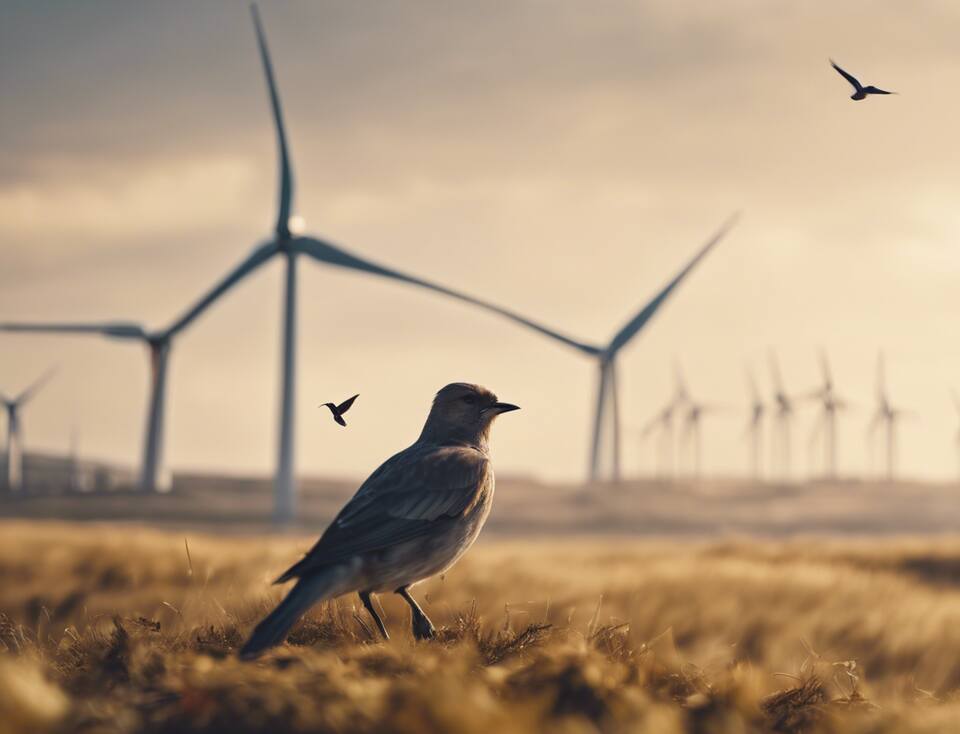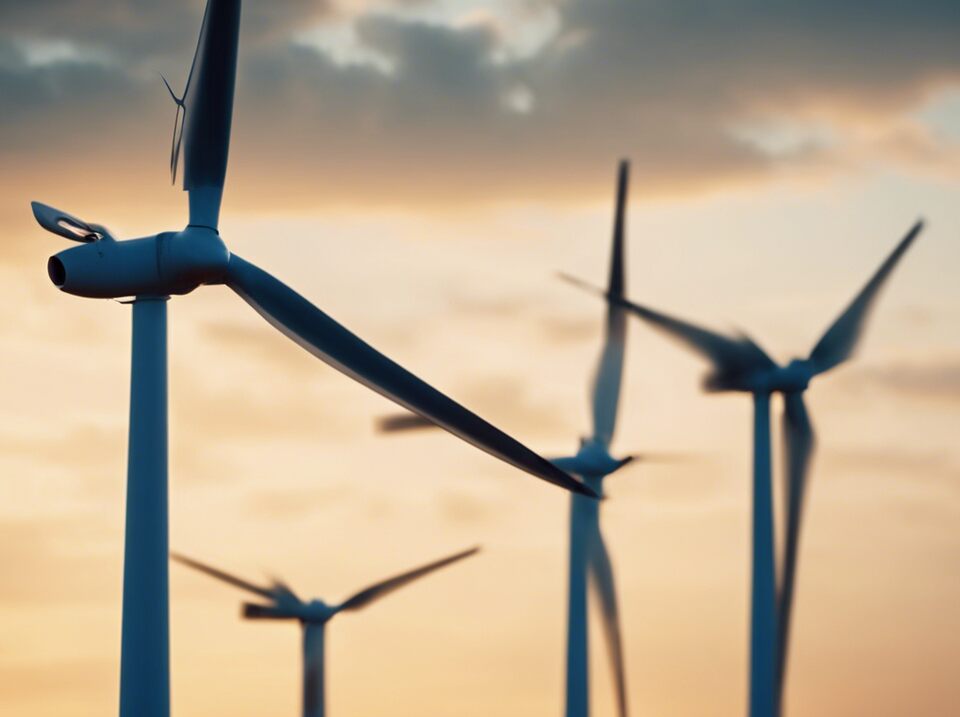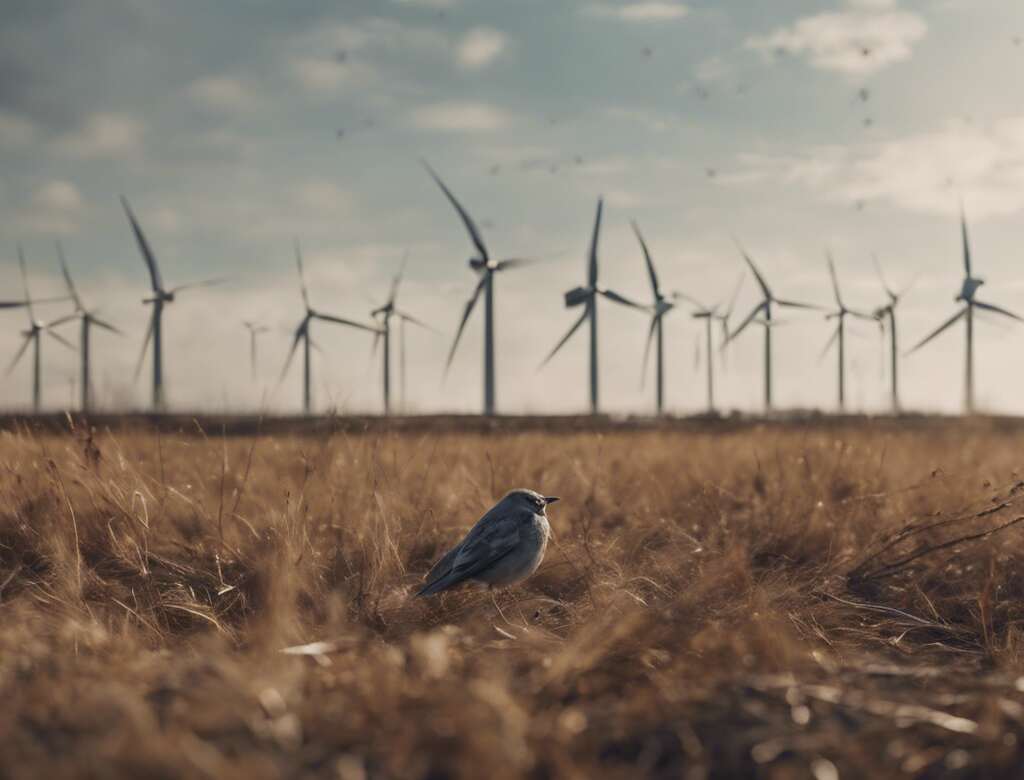Welcome to our comprehensive guide on the impact of wind turbines on bird populations. As renewable energy sources like wind power become increasingly prevalent, concerns about their environmental effects, particularly on avian species, have emerged. In this guide, we delve into the question: “How Do Birds Die From Wind Turbines?” We’ll explore the various factors at play, from collision risks to habitat disruption, shedding light on this important issue.
Table of Contents
Factors Contributing to Bird Mortality from Wind Turbines
Wind turbines have long been hailed as a clean and renewable energy source, but they have also raised concerns regarding their impact on bird populations. Birds can die from wind turbines due to various factors that come into play when these avian creatures interact with these structures.
Impact of Blade Collisions
One of the primary reasons for bird mortality from wind turbines is blade collisions. Birds, especially those with poor vision or maneuverability, can accidentally fly into the rotating blades of the turbines. The high speeds at which the blades rotate make it challenging for birds to avoid them, leading to fatal collisions. Raptors and migratory birds are particularly vulnerable to this risk due to their flight patterns.
Habitat Destruction and Fragmentation
Wind turbine installations can also result in habitat destruction and fragmentation, which can have adverse effects on bird populations. The construction process can lead to the clearing of vegetation and disruption of ecosystems, displacing birds from their natural habitats. This displacement can force birds to navigate unfamiliar territories, increasing the likelihood of encounters with wind turbines.
Barotrauma Effects
In addition to blade collisions, birds can also die from wind turbines due to barotrauma effects. Barotrauma occurs when the air pressure changes rapidly near the turbine blades, leading to internal injuries in birds. The sudden drop in pressure near the rotating blades can cause birds’ lungs to over-expand or tissues to hemorrhage, resulting in death.
Factors Affecting Species Vulnerability
Different bird species exhibit varying levels of vulnerability to wind turbines based on several factors. Flight height, speed, and patterns influence the likelihood of collisions, with fast-flying species at higher risk. The size and agility of birds also play a role, as larger and less agile birds may struggle to maneuver around turbines effectively.
Migration Routes and Stopover Sites
Birds that migrate over long distances may face challenges when their routes intersect with wind turbine installations. Migration routes and stopover sites are crucial for many bird species during their journeys, and the presence of turbines along these routes can increase the risk of collisions. Protecting these strategic areas is essential to mitigate bird mortality from wind turbines.
Mitigation Measures
Efforts to reduce bird mortality from wind turbines include implementing mitigation measures such as technological advancements in turbine design. Innovations like avian detection systems, blade coatings to increase visibility, and adjustments to blade rotation speeds can help minimize bird collisions. Strategic siting of wind farms away from critical bird habitats is also essential.
Continued Research and Monitoring
Continued research and monitoring of bird interactions with wind turbines are vital to understand the full extent of the impact on bird populations. Studies on bird behavior, migration patterns, and responses to mitigation measures can guide conservation efforts and inform industry best practices to mitigate bird mortality effectively.
Bird mortality from wind turbines is a complex issue influenced by various factors such as blade collisions, habitat disruption, barotrauma effects, species vulnerability, migration routes, and mitigation measures. Balancing the need for renewable energy with the conservation of bird populations requires ongoing research, innovative solutions, and a collaborative approach from stakeholders to address this challenge proactively.

Impact of Wind Turbines on Avian Populations and Ecosystems
Wind turbines have become a prominent source of renewable energy, but their impact on avian populations and ecosystems has raised concerns among environmentalists and wildlife conservationists. One of the pressing questions in this realm is how birds die from wind turbines.
The Threat Posed by Wind Turbines to Birds
Wind turbines, with their massive blades spinning at high speeds, present a significant hazard to birds in flight. Despite birds’ ability to maneuver adeptly in the air, they can collide with the rotating blades, leading to fatal injuries. The primary cause of bird mortality due to wind turbines is collision, which can result in immediate death or severe injuries that prove fatal later on. Birds such as raptors, songbirds, and waterfowl are particularly vulnerable to these collisions.
Factors Influencing Bird Fatalities
Several factors contribute to the risk of bird deaths caused by wind turbines. The location of the wind farms plays a crucial role, as turbines erected along migratory routes or in habitats with high bird activity are more likely to cause fatalities. Additionally, factors like weather conditions, turbine design, and lighting can influence the number of bird-turbine collisions. For instance, nocturnal birds may be disoriented by the lights on the turbines, increasing the chances of collisions during nighttime.
Mechanisms of Bird Fatalities
Birds can die from wind turbines through various mechanisms, with collision being the most common. When a bird collides with a turbine blade, the impact can cause immediate death from severe trauma. In other cases, birds may be injured and eventually die due to internal bleeding or organ damage. Moreover, the pressure changes near the turbine blades can also affect birds, leading to barotrauma, where the rapid pressure drop ruptures their internal organs.
Challenges in Mitigating Bird Mortality
Efforts to mitigate bird mortality from wind turbines face several challenges. One of the main obstacles is the lack of comprehensive data on bird fatalities, making it difficult to assess the full impact of wind farms on avian populations. Additionally, implementing effective mitigation measures without compromising the energy production efficiency of wind turbines is a significant challenge. Balancing the need for clean energy with wildlife conservation remains a complex issue that requires careful consideration.
Solutions and Conservation Strategies
Despite the challenges, researchers and conservationists are exploring various solutions to reduce bird deaths from wind turbines. Technological advancements such as blade design improvements, avian detection systems, and radar monitoring can help minimize bird-turbine collisions. Proper siting of wind farms away from critical bird habitats and implementing shutdown protocols during peak migration periods are among the strategies aimed at reducing bird fatalities. Public awareness campaigns and stakeholder engagement are also vital in promoting bird-friendly wind energy practices.
Understanding how birds die from wind turbines is essential for developing effective conservation strategies to mitigate the impact of renewable energy infrastructure on avian populations. By addressing the challenges and implementing innovative solutions, we can foster sustainable energy production while safeguarding our feathered friends in the skies.

Conclusion
As we have delved into the factors contributing to bird mortality from wind turbines and explored the broad impact of these structures on avian populations and ecosystems, it becomes evident that a balanced approach is essential in addressing the challenges posed by renewable energy sources like wind power. While wind turbines offer a clean alternative to fossil fuels, the threat they pose to birds through collision and habitat disruption cannot be overlooked.
The geographical location of wind farms plays a crucial role in determining their impact on bird populations. Placing wind turbines in migration pathways, important habitats, or areas with high bird abundance significantly increases the risk of bird collisions. By understanding bird migration patterns and habitat preferences, we can implement better siting practices to minimize bird mortality while maximizing energy production.
Additionally, the design of wind turbines influences the likelihood of bird collisions. Factors such as tower height, rotor size, and blade speed can all affect bird mortality rates. Innovative technologies like avian detection systems and deterrents show promise in reducing bird collisions by alerting turbines to the presence of birds and prompting them to shut down temporarily. Research and development in this area are crucial for finding solutions that strike a balance between renewable energy production and wildlife conservation.
The impact of wind turbines extends beyond bird mortality to pose broader challenges for avian populations and ecosystems. Birds play a vital role in maintaining ecological balance by regulating insect populations, dispersing seeds, and serving as indicators of environmental health. Large-scale bird fatalities can disrupt food chains and lead to cascading effects on ecosystems.
Moreover, certain bird species are more vulnerable to wind turbine collisions than others, further exacerbating the issue of selective mortality. Endangered or threatened species that are already facing population declines due to habitat loss, climate change, or other factors may be particularly at risk from wind turbines. Conservation efforts must take into account the cumulative effects of multiple stressors on vulnerable bird populations to ensure their long-term survival.
The interaction between wind turbines and bird populations is a multifaceted issue that requires careful consideration of ecological, technological, and regulatory factors. By implementing best practices in wind farm siting, design, and monitoring, we can mitigate the impact of wind turbines on avian populations and ecosystems.
Collaboration between researchers, conservationists, policymakers, and industry stakeholders is essential to develop effective strategies that promote both renewable energy development and bird conservation. Only through a holistic and evidence-based approach can we strike a balance between meeting our energy needs and safeguarding the biodiversity of our planet.



